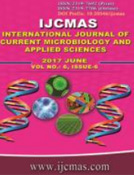


 National Academy of Agricultural Sciences (NAAS)
National Academy of Agricultural Sciences (NAAS)

|
PRINT ISSN : 2319-7692
Online ISSN : 2319-7706 Issues : 12 per year Publisher : Excellent Publishers Email : editorijcmas@gmail.com / submit@ijcmas.com Editor-in-chief: Dr.M.Prakash Index Copernicus ICV 2018: 95.39 NAAS RATING 2020: 5.38 |
Natural regeneration is an inherent ability of floral species to reproduce and proliferate and is a clear indicator of health of forest ecosystem. The community forestry movement has had a positive impact on natural regeneration. The present study focuses on Assisted Natural Regeneration (ANR), also a form of community forestry which assists natural forest regeneration through an arrangement of fire prevention techniques and control on anthropogenic activities by applying various physical barriers. It essentially emphasizes the significance of forest fire management, protection against destructive grazing and assisting the development of naturally occurring tree seedlings in numerous ways. An ANR site ‘Chandpur-5’ of S. robusta or Sal forest covering an area of 25 hectare located in Kalsi Forest Division in Dehradun Valley, Uttarakhand (India) was selected and the study discusses the associated demographic pressure and consequently exhibiting current state of regeneration in non ANR adjoining area, comparing both. The results obtained within the ANR were found unsatisfactory. The program does not seem being implemented in exact approach and applied dynamically within the country. Reasons for this may comprise lack of understanding about forestry and forest ecology, a stubbornness of approach from funding bodies and lack of incentives for rural communities to care for the forests. Development and expansion of cities towards forest with unplanned urbanization policies as well as high density of population in vicinity of forest for agriculture is creating tremendous pressure, resulting in illicit removal of forest resources as well as encroachment of forestland.
 |
 |
 |
 |
 |